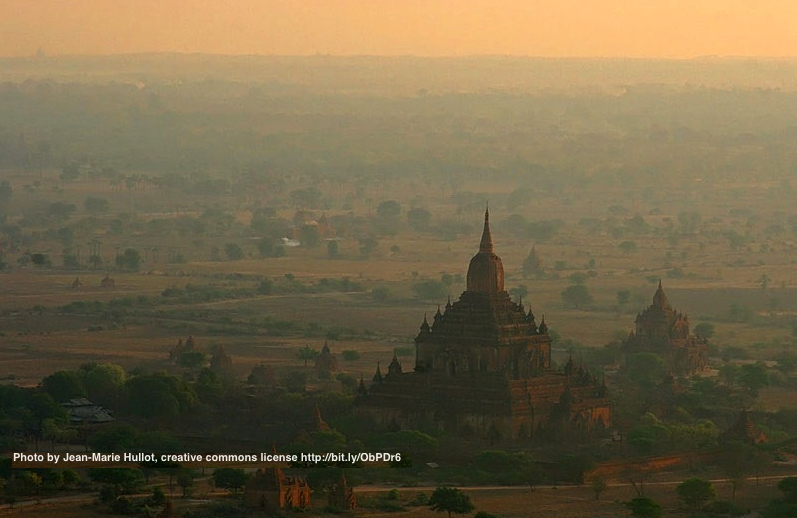This project, “Addressing Climate Change Risks in Water Resources and Food Security in the Dry Zone of Myanmar”, seeks to minimize the increasing impacts of climate change on agricultural and livestock production cycles in the Myanmar Dry Zone. From increasing temperature and water evaporation, to declining water availability, more frequent droughts, and intensifying weather events especially flash floods and cyclones, the local economies of this region are expected to be impacted by climate change. Analysis of drought occurrence over the past few decades has confirmed that the Dry Zone has turned into the most food insecure region in the country. The adaptation activities of this UNDP project will be implemented in five townships in the Sagaing, Mandalay and Magway Regions –Shwebo and Moneywa townships in the Sagaing region, Myingyan and Nyaung Oo townships in the Mandalay Region, and Chauk township in the Magway Region.
Myanmar’s Dry Zone is one of the most climate sensitive and natural resource poor regions in Myanmar. The Dry Zone lies between latitudes 19° 20″ and 22° 50″ north and longitudes 93° 40″ and 96° 30″ east, stretching across the southern part of Sagaing Division, the western and middle part of Mandalay Division and most parts of Magway Division. It’s situated in the rain shadow area of the Yakhaing Yoma and obtains most of its rainfall from the southwest monsoon. The Dry Zone covers approximately 54,390 km2 and represents about 10% of the country’s total land area. It’s the third most densely populated region in Myanmar, at 123 people per km2. Across the Dry Zone, water is scarce, vegetation cover is thin, and soil is severely eroded.
Learn more
- In the news
- Myanmore (February 13, 2018): The ancient hairstyle of Set Set Yo
- Project stories and articles by the UNDP
- Lost and Found: Climate action enhances water and food security in the Dry Zone of Myanmar
- Water Pumps to Improve Irrigation for Dry Zone Farmers
- The ancient hairstyle of Set Set Yo
- Stepping up: The story of one Myanmar woman farmer leading the way
- Running dry: A window into the Dry Zone of Myanmar
- Measuring Progress: Adapting to Climate Change in the Dry Zone of Myanmar
- Heat Tolerant Animals Provide Lifeline for Vulnerable Communities in Dry Zone
- Communities in Myanmar’s Dry Zone Adapting to Climate Change
- Watch project videos
- UNDP project page
- UNDP press release (Feb 17, 2015): Climate Change Adaptation Project Kicks Off in Myanmar’s Dry Zone
| Project Component 1: Response to the climate-induced reduction of freshwater supply | US$ 4,279,400 |
| Project Component 2: Climate-resilient food and livestock production systems | US$ 2,316,760 |
| Project Component 3: Improved climate risk information dissemination | US$ 782,000 |
| Project execution cost | US$ 106,024 |
| Total project cost | US$ 7,289,425 |
| Implementing Entity Project Cycle Management Fee | US$ 619,601 |
| Grant Amount | US$ 7,909,026 |
Project Documents
| Attachment | Type | Size |
|---|---|---|
| Project document | 2 MB | |
| PPR1 (for web) | XLSX | 153 KB |
| PPR2 (for web) | XLSX | 603 KB |
| PPR3 (for web) | XLSX | 181 KB |
| Inception Report | 3 MB | |
| PPR4 (for web) | XLSX | 234 KB |
| Project completion report | 412 KB | |
| Mid-term evaluation report | 3 MB | |
| Final evaluation report | 9 MB | |
| Other project order | 365 KB |



